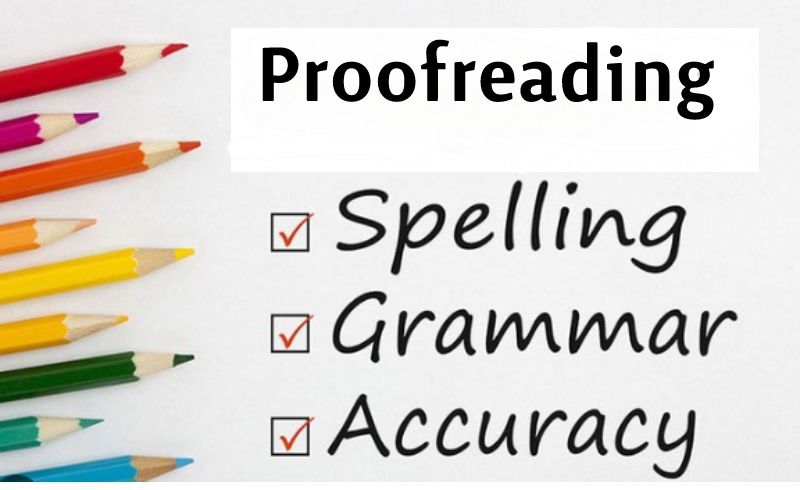What are the main action a writer takes when Proofreading

What are the main action a writer takes when Proofreading
Proofreading and translation are done concurrently. Proofreading is a necessary step in translating, editing, and creating any information. Every translation agency adheres to a set of standards to provide high-quality work. The two-step procedure used by most translation companies typically entails translation and Proofreading. However, editing is also crucial. People frequently believe that editing and Proofreading are the same things. But first, it’s essential to comprehend the distinction between editing and Proofreading. In this article, we will let you know about the main action a writer takes when Proofreading
Table of Contents
A Misconception about Editing and Proofreading
This misunderstanding of the role of Proofreading is common. If there are any errors in the paper, Proofreading takes care of them. But it has nothing to do with the document’s overall modification. The translators are responsible for the style manual and stylistic decisions. These should only be a problem to the proofreader if any translated content does not adhere to the rules of the text and its format.
Proofreading does not indicate that the translation is clumsy or prone to mistakes. Instead, it stresses the importance of ensuring he has made the most effort possible to minimise errors. The target audience, as well as the client, benefit from this strategy.
The goal of both procedures, whether it be editing or Proofreading, is to produce accurate and high-quality translations. Consequently, it is not unexpected that both names are used interchangeably. Both processes should be thought of as distinct because there is a big difference between them.
Editing
Editing is a procedure that involves making adjustments to the translation and making suggestions to raise the level of quality overall. This promotes improved, reliable, and error-free translation.
Proofreading
On the other side, Proofreading refers to the revision of minor faults in the previously translated text, such as typographical, grammatical, formatting, and punctuation issues. It happens during the last stage. Therefore the proofreader must go through the entire text and attempt to make sense so that the final draught is acceptable before it is returned to the client.
Four Eyes Principle
The four eyes rule is a well-known and vital translational principle. It is employed and advised by professionals for accurate Proofreading. The fundamental concept is that two people should evaluate an identical material to improve it. Two or more persons check, scan, and improve the content. The proofreading process will take care of these three major issues.
- Security
Accuracy
Ethics
To ensure correctness in the content, it is crucial to apply the four-eye principle.
What is the Four-Eyes Principle?
Translation agencies are also acquiring professional proofreading services as well. They use a team of internal translators to provide the translation and frequently contract out the task of Proofreading. People heavily rely on the proofreader to review and scan their work while writing for professional publications. Therefore, Proofreading is essential to the translation process as well, and it is done to examine several parts of the translated information, including
Typos
Poorly translated text
Removals from the original text
An inconsistent translation of certain words or sentences
To resolve the significant concerns of the translated text, Proofreading is essential during the translation process. Terminology selections, sentence structure, and the search for relevant references are all examples of this technique.
Equipment for Proofreading
Services for translation and interpreting are more in demand than ever. The process of Proofreading can be facilitated by using modern tools. The primary tool is computer-assisted translation or CAT for short. CAT software operates methodically. Translation memory is used to generate the terminology database. Translators and proofreaders frequently use these technologies to facilitate their job and guarantee consistency.
Additionally, Google’s and Grammarly’s spell checks, along with a few others, are among the tools that translators employ to ensure the linguistic quality of their work. They use these techniques to find mistakes.
Significance of Human Proofreaders
Modern technology has improved translation software. They have advanced significantly, and proofreading tools are also continually changing. However, the human element and contribution to translation, editing, and Proofreading cannot be replaced. There is a human factor involved in ensuring the language is accurate and readable. Furthermore, linguistic quality assurance tools are still necessary for translation and post-translation procedures like Proofreading, even though CAT techniques are helpful in these areas. Both of them can cooperate but cannot identify typing errors, which might lead to obstacles and recommend incorrect locations even when the text is already accurate and grammatically sound.
Consequently, having a second set of eyes can help the content’s quality. Therefore, you mustn’t solely rely on technology for work. These are essential in improving transcribing services.
Essential to Attain the Highest Quality Standards in Translation
In various regions, various translation theories are constantly in circulation. However, this technique demands more hands-on effort and less approach. The process of Proofreading raises the bar for translation quality and guarantees that the translated text is accurate. Additionally, it is a simple operation that needs the assistance of experts to attain accuracy, precision, and flow. Businesses should ensure they discuss the clients’ demands and offer solutions in line with those needs. To complete the process effectively, they should place a lot of emphasis on examining the needs, language pair, and timeframes.
Conclusion
Making a translation endeavour a tremendous success depends on Proofreading. Editing and Proofreading are frequently confused as being the same procedure. These two procedures, nevertheless, are distinct ones that professionals perform at various phases of translation. To produce the finest possible quality translation, Proofreading is essential.
Also read: How to Avoid Overdraft Fees?
Also read: Banana Backwoods





